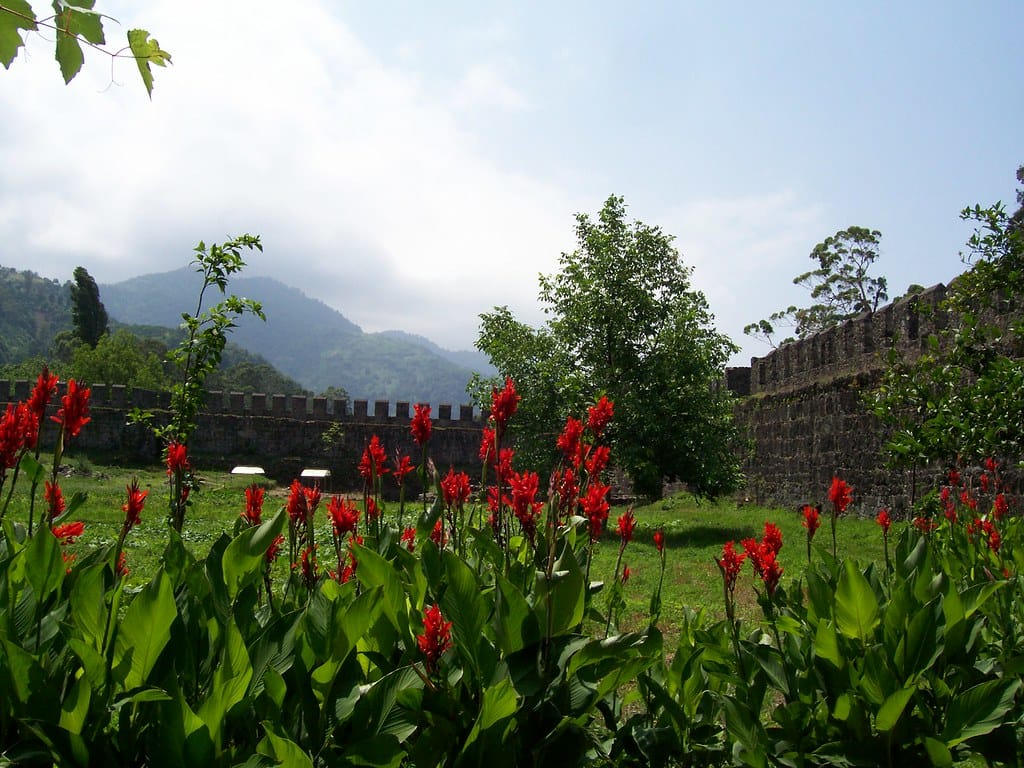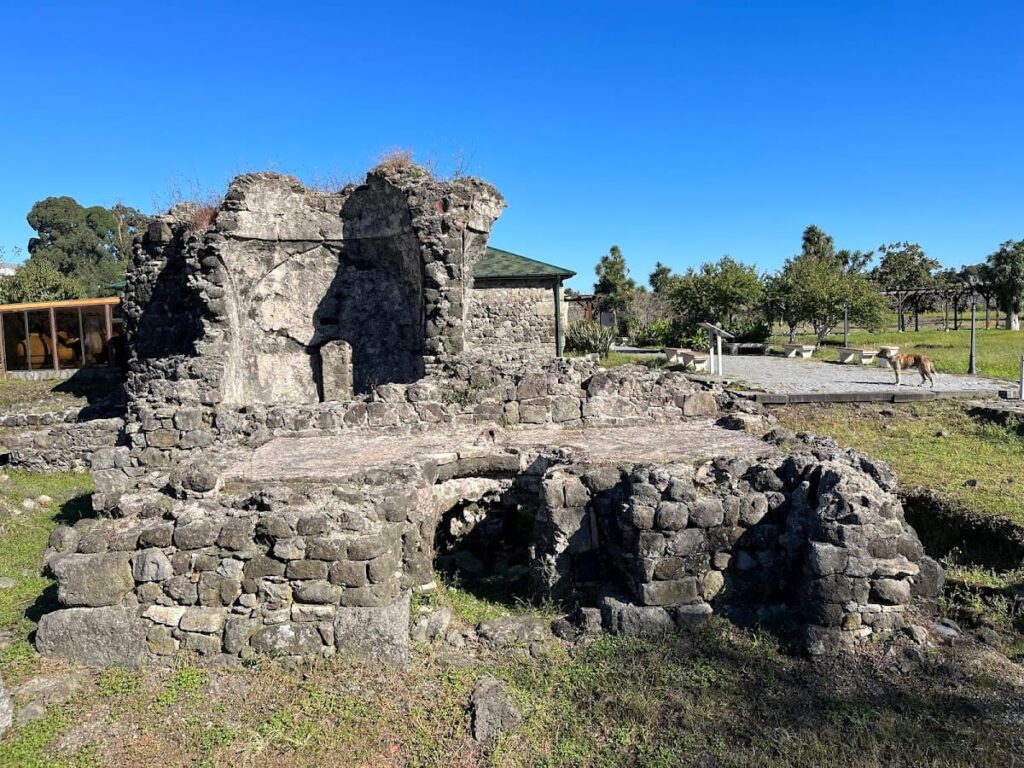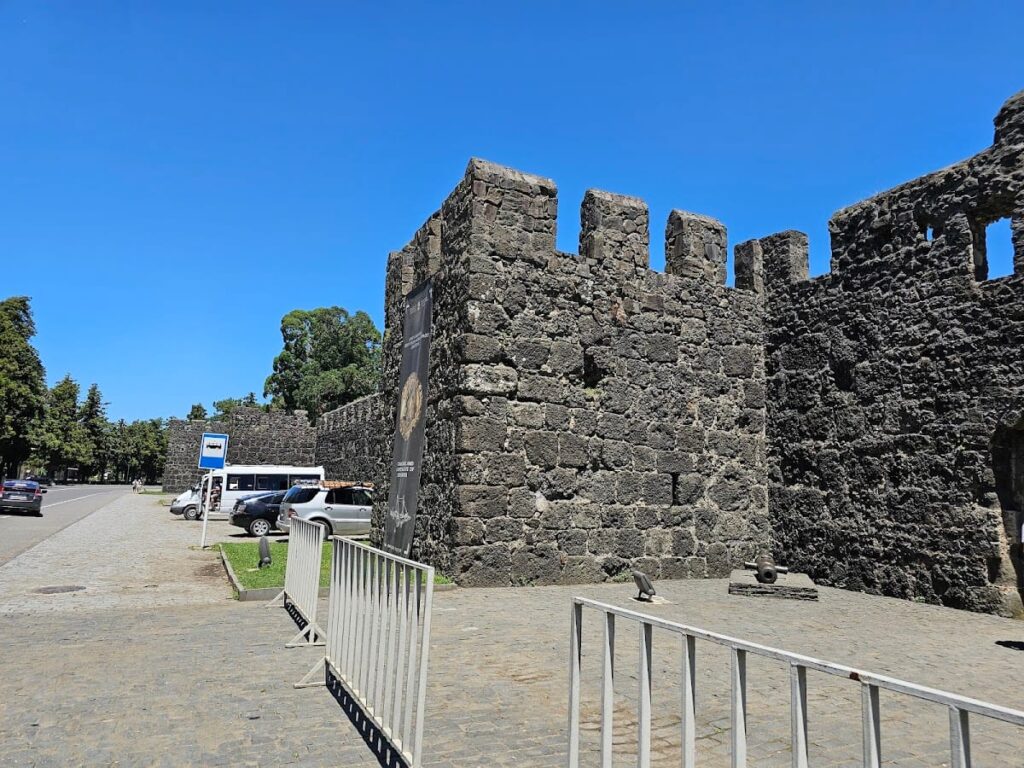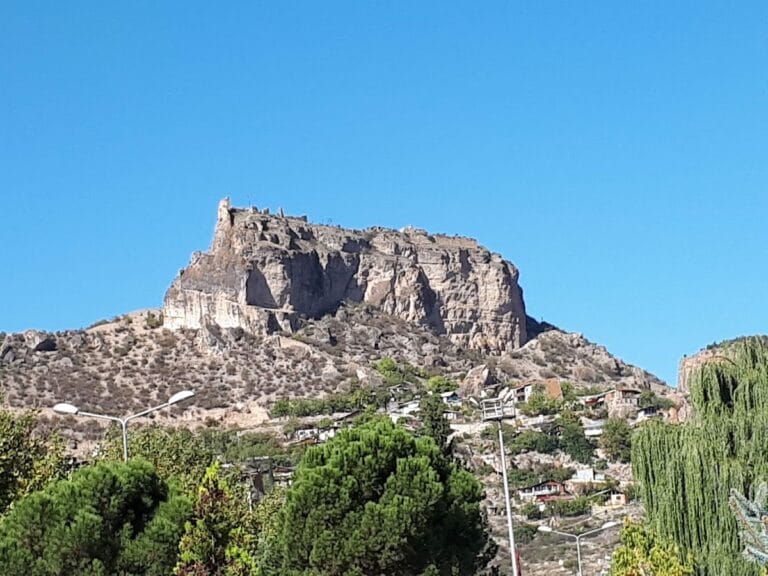Gonio Fortress: A Historic Roman and Ottoman Stronghold in Georgia
Visitor Information
Google Rating: 4.5
Popularity: Medium
Google Maps: View on Google Maps
Country: Georgia
Civilization: Byzantine, Ottoman, Roman
Remains: Domestic, Military, Religious, Sanitation
History
Gonio Fortress is situated in the Adjara region of Georgia, near the mouth of the Chorokhi River on its left bank, close to the Black Sea and the Turkish border. Archaeological evidence indicates human settlement at this location from as early as the 8th to 7th centuries BCE. The fortress itself, historically known as Apsaros or Apsaruntos, was constructed by the Romans in the 1st century CE, likely under the command of Pompey. It served as a military stronghold controlling access to the Chorokhi River and the surrounding valleys.
The site holds mythological significance linked to the Argonauts’ legend. It is traditionally identified as the burial place of Apsaros, son of King Aeetes, who was slain by Jason during the quest for the Golden Fleece. Additionally, local tradition associates the fortress with Matatha, one of the twelve apostles of Christ, believed to be interred there. Ancient writers such as Pliny the Elder, Appian, and Arrian mention Apsaros, confirming its strategic and cultural importance in the ancient region of Colchis.
During the 2nd century CE, Gonio Fortress housed five Roman cohorts, underscoring its military role within the Roman Empire. The fortress continued to function as a significant administrative and defensive center through the Byzantine period. In the 13th and 14th centuries, the Genoese controlled the site, establishing a trading station that capitalized on its coastal position.
In 1547, the Ottoman Empire captured Gonio and undertook further fortifications. The Ottomans maintained control until 1878, when the fortress was ceded to the Russian Empire following the Treaty of San Stefano. The fortress experienced military action during this period, including a 1647 seizure by Cossack forces, which was later reversed by Ottoman recapture. In the 17th century, the Islamized Todadze family held dominion over the fortress.
Archaeological investigations began in 1959, with major excavations in 1961 and continuing research revealing layers of occupation from Roman times through the 19th century. Since 1994, Gonio Fortress has been preserved as a museum-reserve, safeguarding its extensive historical legacy.
Remains
Gonio Fortress occupies a rectangular area approximately 228 meters long and 195 meters wide, covering about 4.75 hectares. Its defensive walls are reinforced by eighteen towers spaced at regular intervals, with four larger towers positioned at the corners. Stone staircases are found within each tower, and tunnels run beneath the fortress grounds. The construction exhibits multiple phases, with the oldest masonry composed of large, precisely cut rectangular blocks and massive boulders up to one meter thick. These walls reach heights of five meters generally and seven meters at the corners, dating to pre-feudal times.
The upper sections of the walls consist of irregular cobblestones, reflecting mid-16th century Ottoman reconstruction efforts. The walls are bonded with lime mortar and remain well preserved. Local oral tradition recounts that stones were passed hand-to-hand from the nearby village of Kvariati to the fortress during its construction.
Within the fortress, archaeologists have uncovered remains of Roman-period structures dating from the 1st to 3rd centuries CE. These include baths equipped with water reservoirs, military barracks, a praetorium (the commanding officer’s residence), sewage and water supply systems, wells, and mosaic floors. The mosaics display geometric patterns such as chessboard and rhombus shapes, crafted from pink and dark stones.
A large mosque, or jame, from a later period stands in the central courtyard, indicating Ottoman-era religious use. Nearby, at Akhalsofeli, lie the remains of a monumental 6th-century church measuring 24 by 18 meters. The fortress had two main gates on its south and west sides; the western gate served as the principal entrance. This gate was recessed between towers and once featured a large carved stone bearing an inscription, now lost. At the start of the 20th century, elaborately decorated doors adorned the main entrance but were removed by foreign archaeologists, leaving only ruins visible today.






